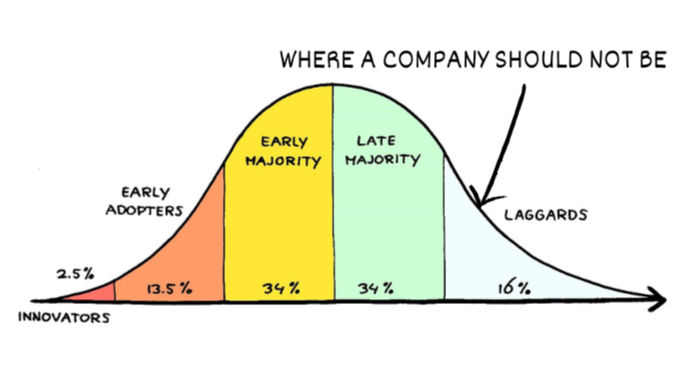Shein: A Process Management Machine
- Anne Werkmeister
- Jun 23, 2025
- 4 min read

Let’s get one thing straight: Shein is not a company we should aspire to replicate. Its model is built on environmental overconsumption, questionable labor practices, and a level of overproduction that contradicts every principle of sustainable business.
The idea that fashion should move at the speed of social media is, frankly, part of the crisis we’re in.
But here’s the paradox: while the business model is fundamentally harmful, the underlying systems, particularly in data usage, process automation, and feedback-driven product cycles, are worth studying.
This article isn't about celebrating Shein’s success. It's about understanding how they’ve built such a powerful (and dangerous) machine, and what parts of that machine, if applied ethically and responsibly, could inspire better, more sustainable digital practices in other industries.
From real-time trend tracking to micro-scale product testing and automated supply chain orchestration, Shein has rewritten the playbook for speed and responsiveness.
1. A Data Engine in Overdrive: Shein’s Secret Weapon
At the heart of Shein’s empire lies a relentless focus on data.
This isn’t just “data-informed” decision-making, it’s a full-on data-first product model.
Shein’s teams scrape millions of data points every day from:
E-commerce websites (Zara, H&M, ASOS, etc.)
Social media platforms (Instagram, TikTok, Pinterest)
Search trends and mobile behavior
Every trending color, cut, keyword, or influencer post is catalogued, ranked, and analyzed. They track what’s selling, what’s being liked, and what’s getting saved to wishlists, across their competitors and the broader fashion ecosystem.
This data isn’t used just for marketing, it drives:
Design briefs: Their designers aren’t working from mood boards, they’re working from dashboards.
Inventory bets: Only styles with early digital traction are produced, and always in micro-batches.
Real-time trend validation: If a product flops online, it’s pulled before anyone even notices.
In short, Shein turned trend-watching into an AI-powered system, automating what was once instinctive, seasonal, and high-risk into something measurable and scalable. Fashion is no longer art first, it’s a digital science.
This obsessive digital feedback loop is what allows Shein to launch up to 10,000 new products a day and adjust their inventory faster than any other retailer on the planet.
2. Real-Life A/B Testing at Scale: Fashion’s Leanest MVP
Once Shein’s data engine spots a promising trend, the next step isn’t mass production, it’s micro-testing. Every new product is launched in tiny batches of 100 to 300 units, shipped out quickly to test real-world demand.
It’s like running A/B tests in real life, not on landing pages, but on clothes.
Why is this so powerful?
The investment is minimal. No need to gamble on 10,000 units of a new dress, just make 200 and see what happens.
Feedback is instant. Sales velocity, customer reviews, return rates, Shein tracks it all within days of launch.
The decision is empirical. If a product performs well, it’s scaled up. If not, it disappears. No ego, no attachment.
This approach turns traditional fashion upside down. Where most brands overthink collections months in advance, Shein just puts it out there and watches the data. They’ve industrialized experimentation, making "just try it" a core business process.
In the end, only the customer is right. You can analyze, design, and forecast all you want, but until it’s in someone’s cart, you don’t know. Shein doesn’t wait for validation, they let the market decide in real time.
It’s lean startup thinking applied to fast fashion. MVPs aren’t for software only, they’re alive and well in the wardrobe.
3. Full-Stack Control: From Idea to Doorstep
After collecting trend data and testing products in micro-batches, Shein’s third lever is total mastery of the product lifecycle, from design all the way to delivery. Like Amazon, Shein is not just fast, it’s vertically integrated and ruthlessly efficient.
There are no middlemen, no resellers, no storefronts. Shein controls everything:
Design: Driven by in-house teams and real-time data insights.
Manufacturing: Partner factories in southern China, coordinated in real time.
Logistics: Warehouses optimized for direct-to-consumer international shipping.
Sales: 100% online, primarily through Shein's app and website.
Marketing: A potent mix of SEO/SEA optimization and Gen-Z-focused influencer campaigns.
Shein talks directly to its customers and delivers directly to them, skipping the traditional fashion retail structure of agents, distributors, and franchise networks.
That control gives them:
Speed: Products go from concept to shipping in as little as 7–10 days.
Margin: No one else takes a cut, all revenue flows through their own ecosystem.
Customer Data: Every click, scroll, and return is captured and fed back into the system.
Brand Reinforcement: Through daily app engagement, email marketing, and influencer buzz, Shein stays top-of-mind.
This end-to-end model is what allows Shein to run a fashion business more like a tech platform than a retail chain. It's not just agile, it's self-contained, fully measurable, and globally scalable.
And while the sustainability of this approach is deeply problematic, the structural discipline, the idea of owning your lifecycle, from insight to delivery, is something any digital or product leader should pay attention to.
Conclusion: Learning From the Dark Empire
Shein is not a success story, it’s a warning.
Behind the slick app, addictive UX, and record-breaking growth lies a model that pushes fast fashion to dystopian extremes:
Environmental destruction, with CO₂ emissions that rival entire industries.
Labor exploitation, with multiple investigations linking Shein to Uyghur forced labor and unsafe factory conditions.
Cultural and creative theft, regularly accused of copying independent designers.
Hyper-consumption culture, driven by endless scrolling and one-click overbuying.
It’s a business that scales not only speed, but damage.
Yet , Shein also embodies some of the most advanced operational practices in the digital world:
Real-time data loops powering product design
Micro-testing as a default to reduce inventory risk
A fully controlled supply chain enabling speed, margin, and insight
Direct-to-consumer marketing and sales with no reliance on external retail
At Romulus Technology, we believe in progress through responsible innovation. That means studying systems like Shein not to replicate them, but to extract the operational intelligence and reapply it toward ethical, sustainable, human-centered business models.



Comments